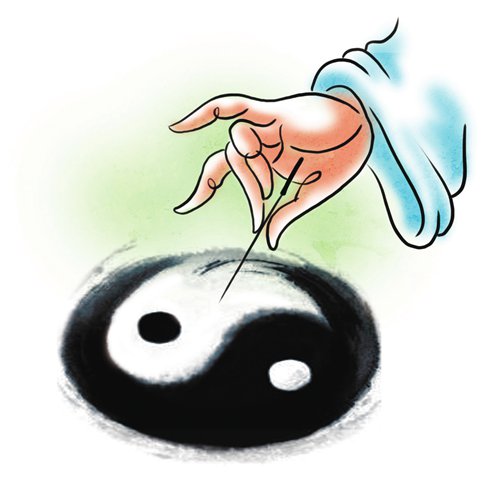
Illustration: Liu Rui (Photo: Global Times)
Until very recently, Chinese people living in China got their understanding of how Chinese medicine is viewed in the US mainly via a movie called The Gua Sha Treatment. The movie, directed by Zheng Xiaolong, related the ordeal of a Chinese immigrant family after the grandpa treated the grandson, who had a cold, with the traditional Gua Sha remedy.
The treatment, which is merely skin scraping with an edgy object such as a comb made from a buffalo horn, has been practiced for thousands of years by Chinese medicine therapists. Believers think it brings out the toxic energy that makes the body ill through the skin's pores and, therefore, allows for healing. But the black and blue marks it left on the skin of the child alerted the teacher at his school to what he thought was child abuse.
In the ensuing legal battle against the government over the custody of the child, the Chinese family was tossed into a seemingly hopeless challenge - to explain the largely inexplicable traditional Chinese treatment to skeptical Americans - and the cultural differences were so frustrating that the grandpa moved back to China where a harmless traditional treatment wouldn't be mistaken for child abuse.
When the movie came out in 2001, it felt very real. It was indeed based on a real story. Although Chinese medicine was first brought to the US during the Gold Rush, until the 1970s practicing acupuncture in the US could land you in jail. The New York Times columnist James Reston's 1971 piece on the front page of the paper about his own experience of undergoing an acute appendicitis operation in Beijing with acupuncture anesthesia might be one of the earliest spotlights that Chinese medicine received from the mainstream media in the US. But 30 years later, many Americans had still not heard of traditional Chinese medicine, let alone make any positive comment about it.
Things are clearly different now. Chinese pharmaceutical chemist Tu Youyou's 2015 Nobel Prize in Physiology or Medicine for her contribution in discovering artemisinin from sweet wormwoods to treat malaria has drawn broad attention to the value of Chinese herbal medicine. Nin Jiom, a herbal syrup made in China, was found to be magically effective in alleviating sore throats and coughing caused by flu for many Americans during the winter flu epidemic. It enjoyed coverage from major publications while retail prices in the US shot up. Dr Oz, an American cardiologist and TV personality interested in alternative medicine is heading to China in May to shoot an episode there for the first time about Chinese medicine for his popular health talk show The Dr. Oz Show. And a major exhibition was just unveiled at the Museum of Chinese in America in New York to present the history and development of Chinese medicine in the US. These and many more other signs show that Chinese medicine is picking up momentum in mainstream American society.
But curiously, at the same time, the debate about Chinese medicine versus Western medicine is heating up again in China. The debate has not ceased in China since the early 20th century when some intellectuals influenced by Western culture started to fiercely criticize Chinese medicine and call for its abolition. The temperature seems to have reached a new high now amid the government's strong promotion of traditional culture.
Those suspicious of Chinese medicine think it is nothing more than quackery. They perceive too many false and fake remedies, ineffective, sometimes even harmful herbs and unprovable mechanisms. This is maybe true to some extent. Chinese medicine is an empirical system based on experience, practice and intuition. And it often deals with invisible concepts like qi, acupoints and meridians.
Such a system lasting for thousands years may leave more space for superstition and fakery than scientific experiments, data and clinical trials-based Western medicine. It is hard for such a system to convince those who are suspicious.
One way to close the gap is to launch more scientific experiments to prove Chinese medicine's effectiveness. That's what today's Chinese medicine practitioners have already been doing. But there is another layer of the story that's worth highlighting.
Donna Mah, a Wall Street financier turned traditional Chinese medicine practitioner and guest curator of the exhibition, told me when she was a child, her grandmother didn't allow her to eat more than three or four lychees at once as lychees have too much heat and in excess are therefore not healthy. When she asked why, the old lady couldn't come up with any answer. So she always thought it was a trick to just stop her eating the expensive fruit until years later she went to China as a grown up and had as many lychees as she could. She got a full mouth of blisters. "It turned out the inexplicable traditional wisdom really works," Mah said.
Mah's story made me think maybe the battle between Chinese medicine and Western medicine is not only about medicine but also about humans' exploration of the world. Science is undoubtedly a powerful way to understand the world. But it is not the only way, and it is not adequate to explain everything. When more people realize this, the battle will die down for sure.


